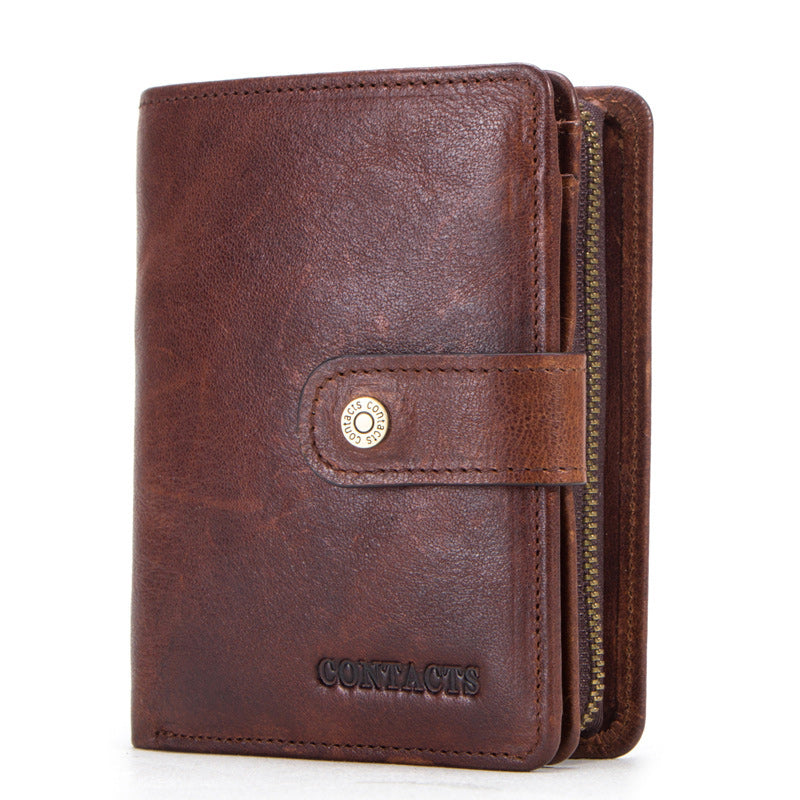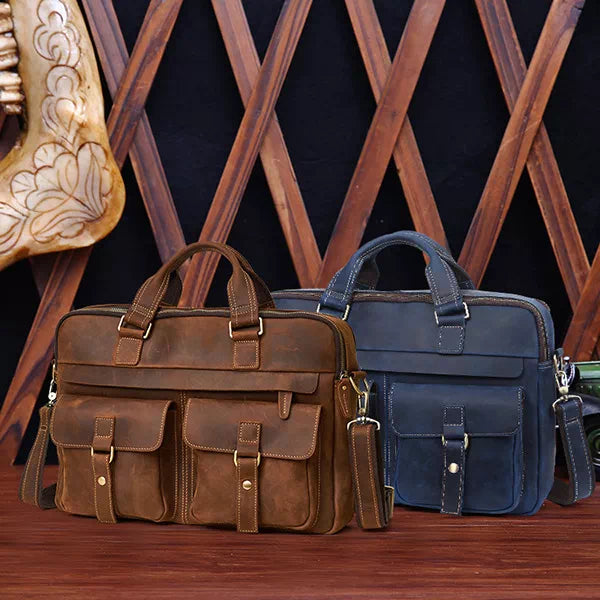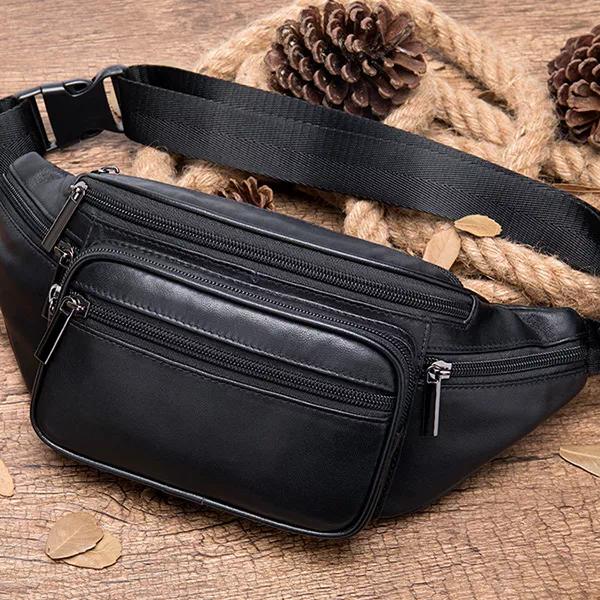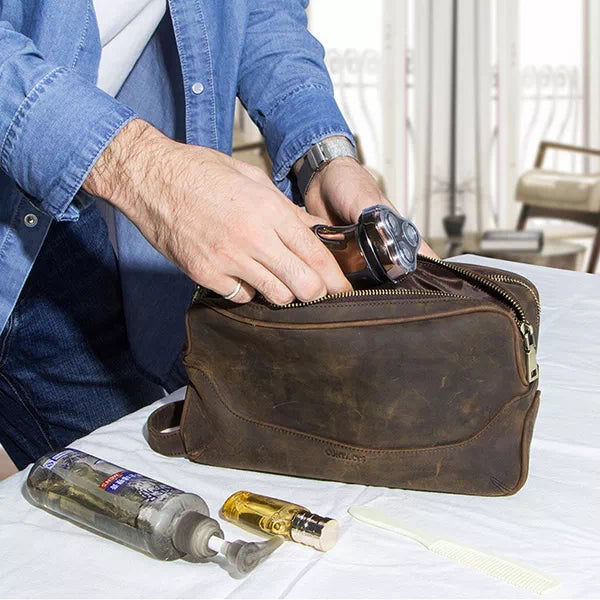Understanding Vegetable Tanned Leather: A Timeless, Eco-Friendly Choice
As someone passionate about leather and its craftsmanship, I've often been asked: What makes vegetable-tanned leather stand out? Whether you're a leather enthusiast or simply looking for high-quality, durable products, it's important to understand the differences between tanning methods, especially when it comes to sustainability and longevity.
What Is Leather Tanning?
Leather tanning is a crucial process that transforms raw animal hides into a durable material we can use in everyday products—bags, belts, shoes, and more. There are various tanning methods, but they all serve one purpose: to prevent the hide from decomposing and make it usable.

There are two primary types of leather tanning: vegetable tanning and chrome tanning. Each method has its process, advantages, and impact on both the leather itself and the environment. Let's start by diving into vegetable tanning and what makes it a special choice.
What Is Vegetable Tanned Leather?
Vegetable-tanned leather is made using natural tannins found in plant materials—tree bark, leaves, fruits, and even roots. This method dates back thousands of years and has been passed down through generations, keeping the traditional leather-making craft alive.

One of the most appealing aspects of vegetable tanning is its eco-friendly nature. Since it uses only natural materials, vegetable-tanned leather has minimal environmental impact. It’s biodegradable, meaning it will naturally break down over time, unlike chemically tanned leathers, which often release toxins into the environment.

But there’s more. Vegetable-tanned leather ages beautifully. It starts with earthy, natural tones that evolve, developing a unique patina that reflects its journey. The leather itself is slightly stiffer at first, but softens with use, creating a product that molds to your lifestyle and grows more attractive the longer you have it.

The Vegetable Tanning Process
Crafting vegetable-tanned leather is a labor of love. The process begins with carefully sourced animal hides, which are soaked in natural tannins for several weeks or even months. Unlike the rapid process of chrome tanning, which can be completed in a single day, vegetable tanning requires patience and precision. This extended period allows the tannins to slowly penetrate the hide, giving the leather its distinct texture, rich color, and robust durability.
While this method takes longer, the result is a leather that not only looks beautiful but is also built to last, making it a perfect choice for high-quality, artisanal products.
Comparing Vegetable Tanned Leather to Chrome Tanned Leather
To truly appreciate vegetable-tanned leather, it helps to compare it with its more commonly used counterpart: chrome-tanned leather. Most of the leather we encounter today is chrome-tanned due to its faster production time and lower cost. Chrome tanning relies on chemicals, particularly chromium salts, to speed up the process, allowing manufacturers to meet high demands in a short amount of time.
However, the environmental impact of chrome tanning is significant. The chemicals used can be harmful to ecosystems, and the process produces waste that’s harder to manage. In contrast, vegetable tanning uses sustainable materials, making it the greener option.
In terms of appearance, chrome-tanned leather tends to be softer and more flexible right from the start, and it can come in a wide range of vibrant colors. But what it gains in initial softness, it often loses in long-term durability. Chrome-tanned leather doesn't develop the same rich patina that vegetable-tanned leather does, and it may wear out faster over time.
Vegetable-tanned leather, on the other hand, starts firmer but softens with use, and the patina it develops only adds to its beauty. It’s a leather that tells a story, reflecting the journey it's been on with you.
Why Choose Vegetable Tanned Leather?
So, why should you consider choosing vegetable-tanned leather? Durability is a big factor—this leather is tough and built to last. It's the kind of material that only gets better with age. If you’re someone who values craftsmanship, sustainability, and a product that evolves, vegetable-tanned leather is the perfect choice.

Eco-conscious consumers are increasingly gravitating toward vegetable-tanned leather because it aligns with the movement toward sustainable, ethically-made goods. The natural process reduces chemical waste and promotes responsible production methods. It’s a win for the environment and for those of us who want our purchases to have a positive impact.
Applications of Vegetable Tanned Leather
Vegetable-tanned leather is used in a variety of high-end products. At Luke Case, you'll find it in leather backpacks, duffle bags, clutch bags, sling bags, totes, and more. Artisans love it because it’s a versatile material that can be customized to create beautiful, long-lasting products.
 |
 |
| Men's Leather Backpack with 15.6 Inches Laptop Compartment | Vintage Glamour Leather Duffle Bag |
If you're someone who appreciates craftsmanship and individuality, vegetable-tanned leather is worth the investment. Unlike mass-produced, chrome-tanned leather, this material is made with care, and its unique qualities shine through in every product.
Caring for Vegetable Tanned Leather
One of the most common questions I hear is: How do you care for vegetable-tanned leather? It’s simple. Avoid exposing it to excessive water, as this can stain the leather or cause it to warp. Use natural oils or waxes to condition the leather periodically, keeping it soft and preventing it from drying out.
Let the leather breathe—storing it in a dry, cool place helps prevent mold. Over time, you'll notice the leather developing a rich, warm patina, a testament to its quality and your careful maintenance.
Read the article "Leather Care Comprehensive Guide" to learn more about leather care and maintenance.
Conclusion: Why Vegetable Tanned Leather Is Worth It
To sum it up, vegetable-tanned leather is a timeless, eco-friendly, and durable material. Its natural beauty, ability to age gracefully and minimal environmental impact make it a standout choice for anyone looking for high-quality leather goods. Whether you're after a custom leather bag, a sturdy belt, or a unique wallet, vegetable-tanned leather offers a blend of tradition, sustainability, and elegance that’s hard to match.
If you’re someone who values a product that tells a story and stands the test of time, vegetable-tanned leather is the leather for you.
Recommended Reading:
If you’re interested in learning more about different types of leather, check out these related articles:
- What is Crazy Horse Leather? - Discover the unique characteristics of Crazy Horse leather and how it compares to other types of leather.
- What is the Difference Between Full-Grain Leather, Top Grain Leather, and Genuine Leather? - Understand the distinctions among various leather grades to make informed choices for your leather goods.









